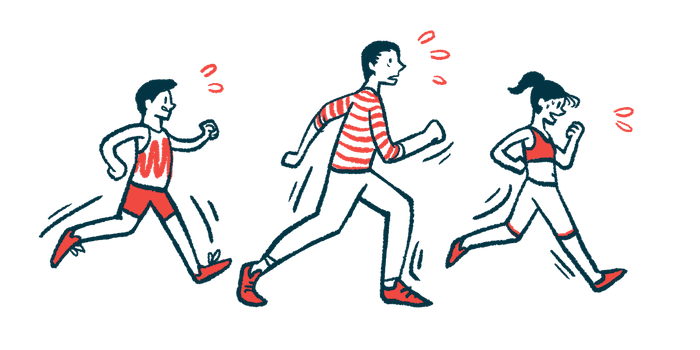Understanding Body Composition in PWS Children May Help to Better Target Therapies
Early detection of deficits in body composition may prevent future complications

Children with Prader-Willi syndrome (PWS) have less lean body mass and grip strength, and spend more time inactive compared to healthy children or those with non-alcoholic fatty liver disease, a pilot study in Canada has found.
“These findings are relevant as early detection of deficits in muscle strength and functionality can ensure effective targeted treatments that optimize physical activity and prevent complications into adulthood,” researchers wrote.
The study, “Comparison of Body Composition, Muscle Strength and Cardiometabolic Profile in Children with Prader-Willi Syndrome and Non-Alcoholic Fatty Liver Disease: A Pilot Study,” was published in the International Journal of Molecular Sciences.
Obesity increases risk for metabolic disorders
PWS is caused by the loss of or defects in a paternal region of chromosome 15. The disease is characterized by symptoms such as uncontrolled hunger, increased fat tissue, reduced lean body mass, low muscle tone, lower metabolic rate and energy expenditure, and poor motor function.
Obesity in children increases the risk for metabolic disorders, such as non-alcoholic fatty liver disease (NAFLD) and insulin resistance (when cells don’t respond well to insulin and can’t easily take up glucose from blood), which reduce their quality of life.
Although both are characterized by obesity, PWS and NAFLD have distinct genetic influence, body composition, and cardiometabolic health features, which affect muscle strength and physical activity. In NAFLD, there is central accumulation of fat and metabolic dysfunction, while in PWS, fat tissue accumulates under the skin but is low around the organs, and there is a relatively functional metabolism.
In this pilot study, researchers in Canada evaluated the relationship between body composition and cardiometabolic dysfunction with muscle strength and function in children diagnosed with PWS and children with NAFLD.
These findings are relevant as early detection of deficits in muscle strength and functionality can ensure effective targeted treatments that optimize physical activity and prevent complications into adulthood.
Children with PWS have less skeletal muscle, lean body mass
They analyzed 16 healthy children, nine children with PWS, and 14 with NAFLD. Most healthy children (12) had a healthy body weight, while two children with PWS and none with NAFLD had a body weight within normal reference ranges.
Children with PWS had significantly less skeletal muscle mass than those with NAFLD (11.5 vs. 20.9), and lower lean body mass (i.e. body weight excluding fat tissue), particularly in the lower extremities.
Compared to children with NAFLD and healthy controls, PWS children had significantly reduced handgrip strength (the effort needed to grasp an object), and significantly shorter distances in the 6-minute walking test of exercise capacity. This translated into more time that they spent inactive compared with the other children.
All children with NAFLD and two with PWS had abnormally high levels of alanine aminotransferase, a marker of liver damage. Hyperinsulinemia, or high insulin in the blood, was also observed in two PWS patients and one child with NAFLD, whereas insulin resistance was observed in three children with PWS and in 12 with NAFLD.
This follows “previous findings of characteristic visceral adiposity [fat within the abdominal cavity], low muscle mass and healthy metabolism observed in PWS,” the scientists wrote.
Endomorph body type typical in PWS children
In addition, PWS children predominantly had an endomorph body type, corresponding to relative overall body fat, large fat deposits, and a rounded body shape, consistent with atypical body composition. Comparatively, children with NAFLD had predominantly a mesomorphic body type — marked by relative musculoskeletal robustness, low under-the-skin fat, broad shoulders, and a small abdomen — that may explain their higher muscle strength and enhanced ability to meet physical activity guidelines, according to the team.
“Children with PWS may require targeted obesity management interventions including physical activity focused on muscle training to modify the characteristic body composition associated with the PWS to improve their quality of life,” the researchers wrote.
“These unique differences in body composition combined with the differences in muscle strength and physical performance have potential implications for rehabilitation and therapy in children with [PWS or NAFLD],” they concluded.
The study’s relatively small sample size precluded finding associations between obesity patterns and genetic profile, the team noted. In fact, there were no significant differences in sex, weight, height, waist circumference, waist-to-hip ratio, systolic blood pressure, and all laboratory measures between genetic profiles.
Further research with larger groups may unravel the genetic and metabolic traits associated with these models of obesity. This could “aid in early detection and development of targeted obesity management interventions,” the scientists wrote.








